100:
Means swimming a straight 100 meters or yards in a row without stopping between the lengths.
Meter versus Yard:
Distances in yards are approximately 10% shorter than meters distances.
Adding 5 seconds per 50 meters to each interval might be a good rule of thumb for more accurate trainings.
Preset:
A series of shorter intervals designed to elevate heart rate in preparation for the main set.
Set:
One group of repetitions. E.g. 10 x 100
Send-off interval: “swim + rest”
The rest time is included in the send-off interval. This means you focus on when you start each repetition, not on the amount of rest in between.
E.g. In a set of 6 x 100 on 2’00, each 100 is an interval within the set. This means that you have 2 minutes to complete a 100 before you begin the next one.
On 1’00:
Start every send-off interval after 1 minute has passed since the start of the previous interval.
E.g. If you were swimming a set of 50’s and completing each interval in 50 seconds (50”), you would have 10 seconds (10”) rest before the next interval
R: 10”:
Means 10 seconds of rest (usually between intervals)
Swim:
Swimming the full stroke using legs and arms
Stroke:
Any stroke that is NOT Freestyle
Free (Fr) / Back (Bk) / Breast (Br) / Fly:
Abbreviations for Freestyle / Backstroke / Breaststroke / Butterfly
I.M.:
Short for Individual Medley. This refers to the 4 swimming strokes in this order: Butterfly, Backstroke,
D.P.S.:
Short for Distance Per Stroke. Main focus is on covering more distance per stroke over the same distance or time.
In freestyle and backstroke, emphasize a long bodyline, hip and shoulder rotation, minimizing resistance. With breaststroke and butterfly, keep the bodyline long in the front of your stroke.
Drill:
Unless a specific drill is mentioned in the workout, you may choose the drill that you like.
A “drill” refers to anything that emphasizes one aspect of the stroke to help improving your technique.
E.g. single-arm drill, fingertips drag drill, doggy paddle, etc.
Pull / Paddles:
To help build upper body and core strength and improve pelvic control for better body alignment. Place the pull buoy between your legs at the top of your thighs or between ankles.
Only use arms – No kicking!
Paddles are optional. To avoid injury, they should only be used with a correct swim technique and when you have built sufficient strength.
Hypoxic:
To help build lung capacity and becoming more comfortable in the water by changing and challenging
E.g. 300 m/yd. Hypoxic 3/5/7 – This means swimming a straight 300 m/yd. Freestyle. On the first length, breathe every 3rd stroke, on the second length, breathe every 5th stroke and on the third length, breathe every 7th stroke. Repeat this pattern until the 300 m/yd. is completed.
Descend:
Each consecutive swim gets faster. Your swim time decreases.
Examples:
4 x 100 descend 1 – 4 means you swim four 100’s with each one getting faster.
8 x 100 descend every 1 – 4, 5 – 8 means you swim the first four 100’s (1-4) with each one getting faster and repeat this for the second four 100’s (5 – 8) in the set.
E.g. This set could be done as the first 100 at easy pace, second 100 at steady pace, third 100 at solid pace, fourth 100 at hard pace then the 5th 100 easy, the 6th 100 steady, the 7th 100 solid and the 8th 100 hard.
Build:
This term refers to a steady increase in effort during the given distance.
E.g. 4 x 100 build means starting each 100 at easy pace then building your effort to medium pace near the middle and finally increasing to a faster pace as you approach the end of the 100 m/yd.
The goal in a “build” swim is to build speed while maintaining good stroke technique.
When I swim a 100 build, I usually do the 1st 25 easy, the 2nd 25 focused on D.P.S., the 3rd 25 building power and strength throughout the propulsive phase while maintaining D.P.S. The 4th 25 is about increasing stroke rate while maintaining a good D.P.S.
Negative Split:
This means to do the second half of the swim faster than the first half.
E.g. 4 x 200 negative split means you will swim the second 100 at a faster pace and time than the first 100. The goal is to control your pace at the beginning of the swim so that you have the energy necessary to swim faster at the end of the swim.
“Loco” Set:
A “loco” set (short for “locomotive”), is a progression of alternating easy laps with faster laps to produce a fartlek effect. The faster laps should be done at a controlled, higher intensity, while the easy laps are used for recovery. It’s important to continue swimming, without stopping, throughout these swims.
E.g. In a 1000 loco swim, you will begin with 25 easy/25 fast, then continue with 50 easy/50 fast, 75 easy/75 fast, 100 easy/100 fast, 100 easy/100 fast, 75 easy/75 fast, 50 easy/50 fast, and finally 25 easy/25 fast.

